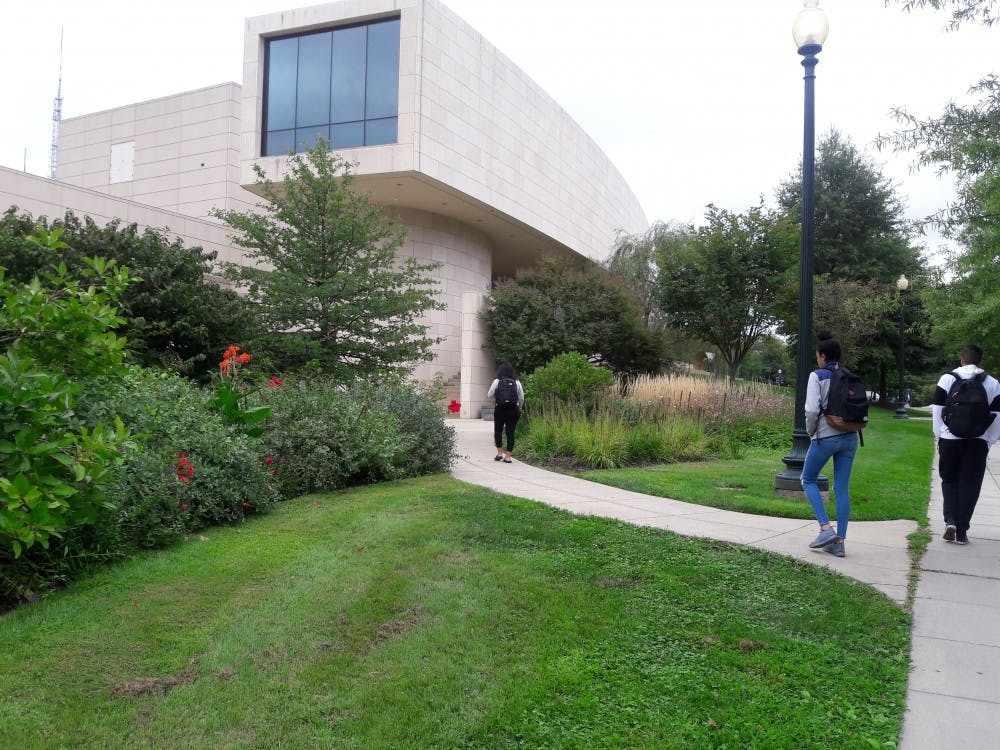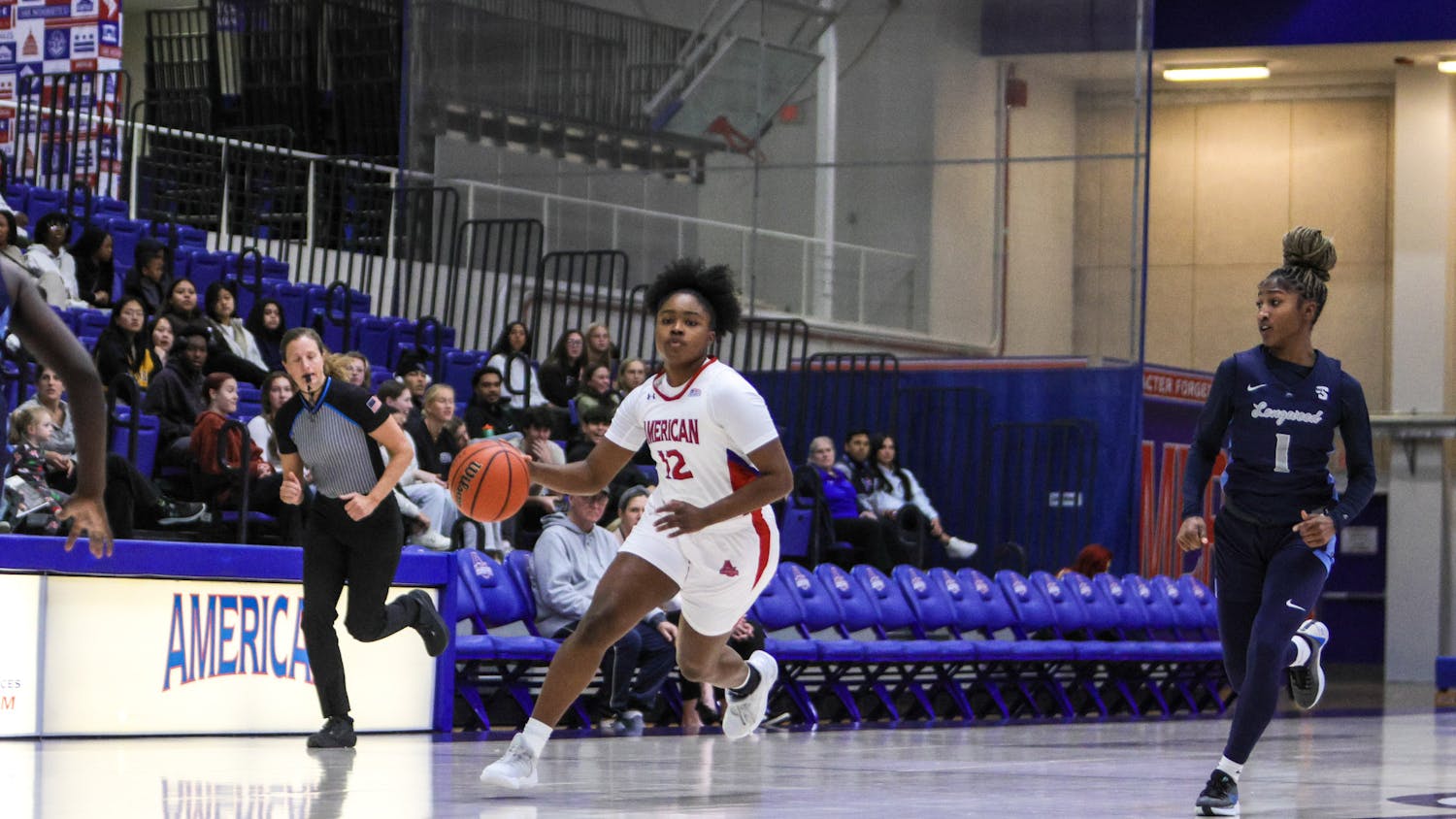After two long years of filling Zoom squares with choreography and videos with personality, the American University dance program returned to the Greenberg Theatre stage for their 2021 production of CHOREOLAB.
The show, presented on Nov. 19 and 20, was a beautiful reminder of the expansive nature of performance and the reality of reconnection.
Department of Performing Arts professor Erin Foreman-Murray, the production’s artistic director and dance program director, opened the show by reminding the audience how performers had spent the past year wondering, “will we ever get back to in-person performance?”
“And here we are,” she said.
CHOREOLAB is an annual event that allows student choreographers to create routines based on a research question that has been explored through dance. This year’s choreographers, juniors Jenn Cinicola, Gretchen Venema and Malik Gomes Cruz, examined concepts such as the human experience in a moment (“The Rhoter of Cognizance”), the concept of binaries (“Beyond the Binary”) and the truth of Black experience in America (“A Sense of Arrival”), respectively.
“It’s a lot of improv. Like, here’s this prompt, I want you to dance this way, and think about this while you’re dancing,” Venema said. “And as the choreographer, you have to glean: what is the essence of this, and what does it mean?”
The show also featured a talkback, which allowed audience members to ask questions about the work they’d seen. All of the choreographers reflected that the rehearsal process encouraged the evolution of the questions that they’d begun the process with. Cinicola’s piece started as a work about statues and permanency, and as time progressed, it morphed into a concept piece about the “perception of stimuli,” which eventually transitioned into her final aforementioned subject. Upon completion, it was a beautiful piece in its intensity and its use of isolation.
Venema, whose poignant piece played with rhythmic and spatial opposites, explored binaries such as hot, cold, big and small through a rehearsal process that included journaling with their dancers and completing movement exercises. One rehearsal, Venema said they wrote a choreography phrase on a paper for some students, and sent them into the hall. Venema then demonstrated that phrase for the remaining students, but only a limited number of times, and then asked them to repeat it. The two different interpretations of this segment were left in their finalized piece as a representation of the different manifestations of learned binaries.
As for Gomes Cruz, his piece was stunning in its use of dynamic action and repetition. His music was also notable, as it included powerful quotes from Black leaders and revolutionaries such as Maya Angelou, Bobby Seale and Martin Luther King Jr. It also featured news clips about the Black Lives Matter protests. In making this choice, he said he wanted his dancers to develop an intimate relationship with the audio and each of the speakers echoing within it.
“These voices are always present,” Gomes Cruz said.
Each of the dancers who took the mic echoed similar sentiments about appreciating the collaborative nature of the process, which they shared was different from other shows they’d taken part in. They appreciated the creative license they were given, as well as the room they had to explore their relationships to the concepts the choreographers were exploring.
“I never actually used dance as a medium to study a topic, so I feel like that’s allowed me to look deeper into the characteristics of my identity,” said Zeyd Khalil, a junior and dancer in Venema’s piece. “It’s something I mentioned to the audience after the second performance, but CHOREOLAB actually gave me the opportunity to realize that I am genderfluid.”
This production undeniably showcased the bright futures of these students at AU and beyond while also reminding audiences of the sheer joy that can come from experiencing art in a collective space again. It is nothing but a good indication of the future of the Department of Performing Arts as they transition into their post-pandemic period.





